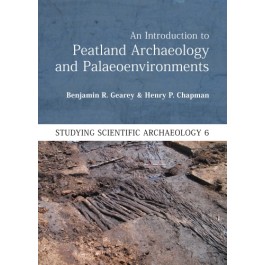 Nouvelles parutions hors SPF
Nouvelles parutions hors SPF 

 |
[Études spécifiques] Benjamin R. Gearey & Henry P. Chapman (2022) - An Introduction to Peatland Archaeology and Palaeoenvironments, Oxford, Oxbow Books, 160 p. EAN 9781789257557, 34,00 €. Peatlands are regarded as having exceptional archaeological value, due to the fact the waterlogged conditions of these wetlands can preserve organic remains that are almost entirely lost from the majority of dryland contexts. This is certainly true, although the remarkable preservation of sites and artefacts is just one aspect of their archaeological importance. Peatlands are ‘archives’ of past environmental changes: the palaeoenvironmental or palaeoecological record. The waterlogged conditions preserve pollen, plant remains, insects and other proxies that can be used to reconstruct past patterns and processes of environmental change, critical records of long term ecological processes for wetland and also adjacent dryland areas. The potential to integrate and combine records of cultural and environmental change, represents the distinguishing feature of peatland (and wetland) archaeology, what we might describe collectively as the ‘archaeo-environmental record’. When these records are analysed in conjunction, exceptional interpretative synergy can be achieved; but this relies on the development and implementation of integrated excavation and analytical strategies and approaches. This new title in our highly successful Studying Scientific Archaeology series provides an accessible introduction to the ecology and formation processes of peatlands, and to the different archaeological and palaeoenvironmental techniques that have been developed and adapted for the study of these environments. It provides an outline of the major themes and methods and as a guide to other more detailed and technical literature concerning peatland archaeology. The case studies have been selected to illustrate, as far as possible, examples of ‘best practice’. Processes such as drainage, agriculture, peat-cutting, afforestation and climate change threaten peatlands and, by extension, the survival of archaeological sites and deposits in situ. On the other side of this environmental coin, healthy, functioning peatlands are important for biodiversity, hydrology and as ‘carbon sinks’ with the potential to mitigate global heating. Recent years have thus seen increasing efforts to stop destruction and damage and rehabilitate peatlands with a view to restoring these ‘ecosystem services’. The book considers these issues in terms of the past loss and damage of archaeological sites and the future protection of the resource in the Anthropocene. . |


